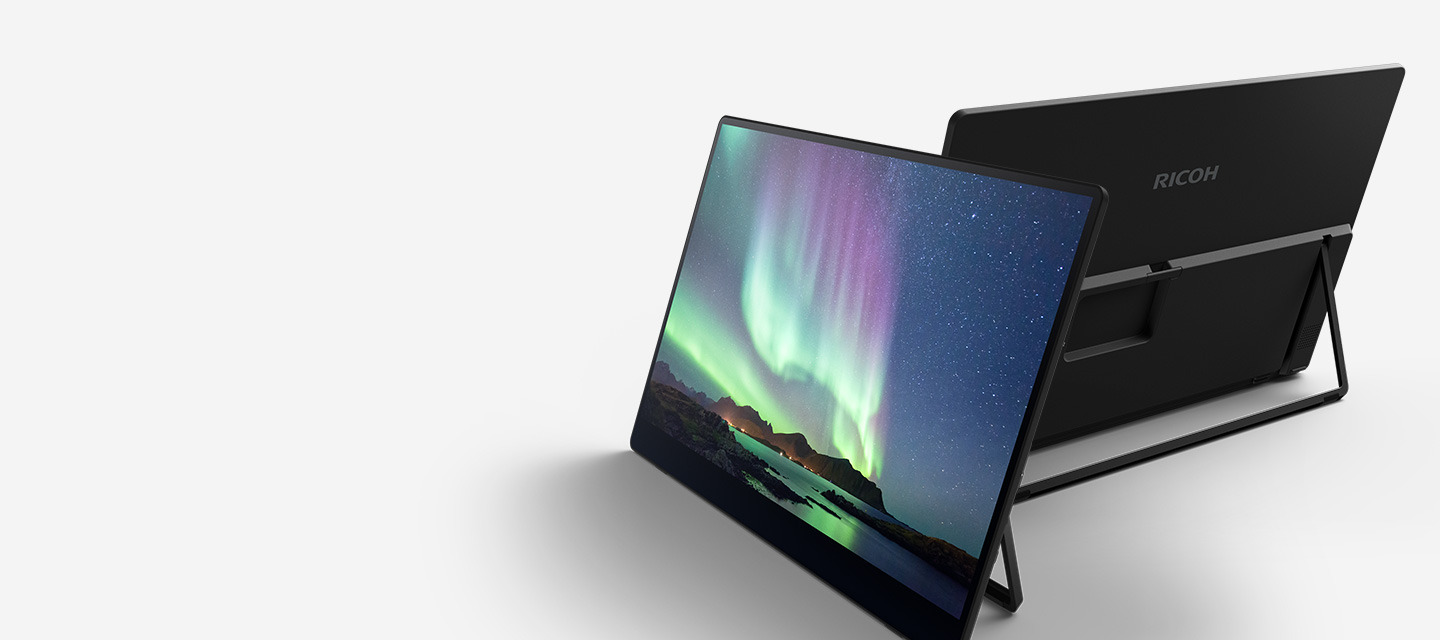Discover the benefits of OLED displays and why they’re the ideal screens for portable monitors
A portable monitor is a productive addition to any desk, particularly if you work from home or travel frequently. When comparing different models, you’ll encounter a plethora of features — display size, connectivity, resolution, backlighting — but ultimately, you’re probably looking for the best display quality for the price.
Backlighting is a big piece of that puzzle. The monitor market is flush with cheaper LED displays, but higher-end OLED models are making an impact due to their elevated picture quality, as well as a number of other benefits. If you’re wondering what makes an OLED portable monitor so remarkable and whether it’s the right choice for you, understanding these benefits will help you make the most informed decision.
Need help picking the right portable monitor for your needs? Check out our complete guide, What to Know About Portable Monitors.
OLED vs. LED: What’s the difference?
In the search for the ideal portable monitor, you’ll find an alphabet soup of acronyms. Some manufacturers have their own proprietary backlighting technology, but generally, the two types you want to focus on are LED and OLED.
LED monitors are typically less expensive, but there’s a reason for that. Where OLED displays emit light from every pixel of the screen, LED displays use “lighting zones” on LCD panels, and the difference is stark. Because they light up the display with individual pixels instead of broader zones, OLED displays can produce the deepest blacks, incredible color accuracy, and superior viewing angles.
This difference is especially noteworthy on smaller displays, like those you’d find on a portable OLED monitor. At that size, you’ll find diminishing returns on resolution beyond the 1080p standard; the difference between Full HD and Ultra HD (4K) is extremely subtle and may not even be noticeable to most users. On the other hand, monitors in the 13” to 16” range — like those found on portable models — can still reap the benefits of OLED technology and enjoy better contrast and a more vivid picture display.
Did You Know?:Here’s what PCMag thinks of the RICOH OLED Portable Monitor 150BW: “The screen's image quality is high, with good color coverage and the ultra-high contrast ratio typical of OLEDs.” Find out more in this review.
Benefits of portable OLED monitors
Naturally, picture quality is going to be at the top of your list when you’re comparing features and weighing the benefits of various portable monitor models. It’s clear that OLED beats out its LED counterparts in that aspect, but that’s not where the benefits of OLED portable monitors end. These displays have a number of additional qualities that make them especially well-suited for portability:
- Slimmer form factor: Because OLED monitors provide their own light sources and don’t require additional hardware, they’re incredibly thin. For example, Ricoh’s portable OLED monitors are less than a quarter of an inch thick at their thinnest sections. That means they won’t add unnecessary bulk on your desk or tucked away in a backpack.
- More lightweight: One of the key tenets of portability is being lightweight; after all, no one wants to lug around heavy equipment. The same qualities that make OLED monitors incredibly thin also allow for designs under two pounds.
- Reduced power consumption: OLED monitors generally use less power than their LED counterparts. According to ZDNet, “Where OLED technology's reduced power consumption really makes a difference is in mobile devices. OLED displays can essentially turn off black pixels… reducing its drain by a significant amount.”
- Less blue light: While the effects of the blue light produced by screens are still being studied, there’s mounting evidence that it can disrupt sleep cycles, which has a negative effect on overall health. Dr. Ralph Chu, a member of the Eyesafe Vision Health Advisory Board, encourages the use of OLED screens with lower blue light emissions, “as they contribute to overall eye wellness and reduce potential risks of long-term exposure.”
- Faster response times: OLED portable monitors are incredibly quick to respond — in some cases, around a single millisecond, which looks virtually instantaneous to the human eye.
Did You Know?:Ricoh’s portable monitors come in wired and wireless variations. Each one has a 15.6” OLED touch display packed into a lightweight design — 1.23lbs for the wired model and 1.58lbs for wireless.
Our recommendation: RICOH OLED Portable Monitor 150 Series
When it comes time to purchase a portable monitor, there are many factors to consider — but lighting technology should be a top priority. OLED portable monitors help increase productivity without weighing you down, making them perfect for the home office, hybrid work that takes you back and forth from the office, and travel. Ricoh’s line of portable monitors has all of the qualities you’re looking for: a vibrant 15.6” OLED display packed into a lightweight frame, wired and wireless connectivity via USB-C and Miracast, and ultra-speedy 1ms response times.
Available in both wired and wireless models, both the RICOH 150 and 150BW portable OLED monitors offer a 10-point touchscreen that puts even more productivity at your fingertips. The ergonomic kickstand provides multiple viewing angles without the need for additional hardware. Click here to learn more about our portable monitor series.
Note: Available in both wired and wireless models, both the RICOH 150 and 150BW portable OLED monitors offer a 10-point touchscreen that puts even more productivity at your fingertips. The ergonomic kickstand provides multiple viewing angles without the need for additional hardware. Click here to learn more about our portable monitor series.








